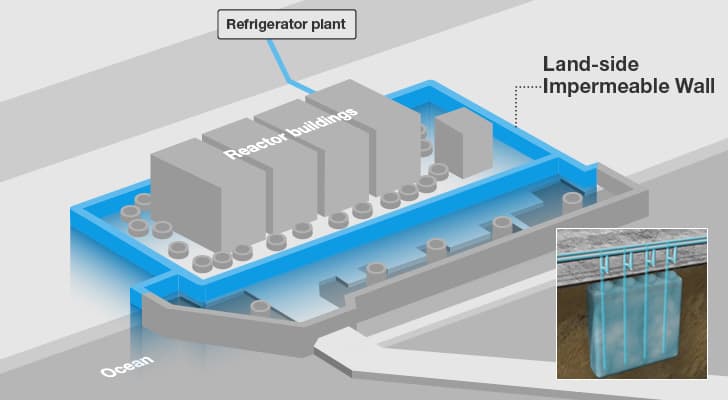Yes, that problem is still far from over. The Fukushima nuclear reactor and it’s damaged core have been in the news for past four years or so due to the potential nuclear dangers they present to the area and the marine life. Now Japanese engineers are trying a new way aimed at stopping the flow of radioactive water from the plant into the sea by activating a huge ice wall underground that will isolate the abandoned facility and try to limit the flow of affected water in and out of the plant.
An ice wall may seem something from the comics but in reality, it is widely used in tunnel boring processes and mining even though it is on a much smaller scale than this. Refrigerated brine will be pumped to the target area which will be cooled till -30 degrees Celsius (-22 ° F) and then on contact, the ground would freeze and thus, seal the reactors damaged in the famous 2011 tsunami. The ice barrier will be around 1,500 m long as well.

These frantic steps are warranted as spiked radiation levels in water have been detected as far away as the Western coast of USA itself. The analysis of water around the reactor is also giving a damning report about the record nuclear waste being leaked into the water. Japanese engineers have already erected purpose-built steel tanks to store the radioactive water from the reactor but there are some places that are still not viable enough to access as radiation levels are too high. Too high that even robots sent to that area have been rendered useless because their electronics got fried. The situation has made a lot of area in the vicinity of the reactor radioactive and marine life has been particularly affected by it. It is time that these drastic steps are taken by the Japanese as more than 400 tons of ocean water flows downhill into the reactor basement, each day and some of it leaks into the surroundings.

The construction of the frozen wall started way back in 2014 and has now been completed. All the four reactors of Fukushima will have this impenetrable wall around them. Around 95 percent of the wall will be activated in the first stage while the remaining 5 per cent area will be covered in the next three steps. The whole procedure will probably take months to accomplish and may eventually stop the radioactivity from spreading into the environment.


